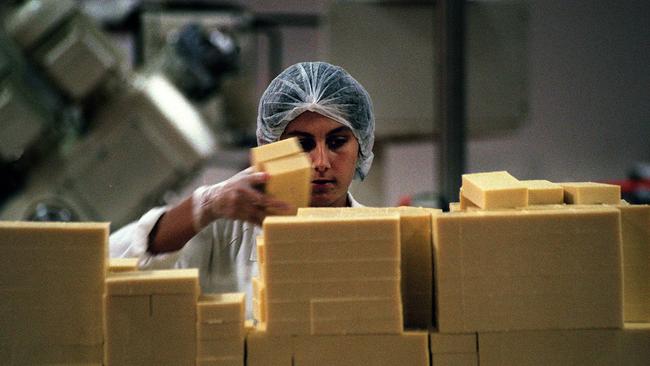Global competition heats up: Dairy imports hit record $2.55 billion
Australian processors have pulled out of dairy export markets as New Zealand and the US swamp our domestic markets with imports.

The tide has gone out on the 2022 dairy commodity boom, leaving 70 per cent of Australian milk exposed to fierce global competition as imports surge to a record $2.55 billion.
Evidence is already emerging of local milk processors cutting their losses and withdrawing from export markets to seek shelter on domestic supermarket shelves, where annual dairy inflation has hit 15 per cent.
Cross-Tasman processor Fonterra cited Global Trade Atlas data showing a 32.3 per cent drop in the volume of Australian dairy exports in February, compared to the same month last year, while Dairy Australia put the volume drop at 25 per cent.
The local withdrawal comes as dairy imports surge 31 per cent in the 12 months to February this year, to reach $2.55 billion, compared to $1.95 billion for the same period in 2021-22.
Dairy Australia figures show New Zealand imports grew 33 per cent in value over the same 12 months, from $885 million to $1.178 billion.
But it was US imports that saw the greatest growth, lifting 66 per cent to reach $431 million in the 12 months to February, compared to just $260 million in the same period last year.
Much of the growth in value was driven by contracts entered into last year when commodity prices were still relatively high.
But now global prices have come off the boil, all eyes are on what happens to imports and their impact on farmgate prices.
The volume of US imports is up 36 per cent to 64,071 tonnes in the 12 months to February, while New Zealand unloaded a whopping 327,482 tonnes at Australian ports over the same period, up 14 per cent.
While only 36 per cent of Australian milk goes into exports, another 36 per cent goes into domestically consumed cheese and other products, which Dairy Australia’s last In Focus report stated “must be competitively priced against imports”.
“Over 70 per cent of milk produced in Australia is exposed to global dairy prices, while the remainder is consumed domestically as liquid drinking milk,” it stated.
Milk2Market exchange commercial development manager Richard Lange said he still expected the 2023-24 price to end up at about $9/kgMS, but urged processors to give farmers plenty of warning.
“It’s right for them (processors) to give early signals, to allow farmers to budget,” Mr Lange said. “Processors need to come back with a price that reflects the market, which is obviously lower than last year.”
Within Australia, both Coles and Woolworths are reporting high inflation is shifting consumer demand to cheaper house-branded and bulk products.
In releasing its third-quarter sales results last week, Woolworths chief executive Brad Banducci said “value-conscious consumers are becoming more thoughtful about their discretionary spend, trading into more affordable options, such as our own brand, and looking for additional ways to save”.
Woolworths recorded 9.1 per cent growth in its own brand sales, while Coles recorded an 11.4 per cent surge in its house-branded lines.




